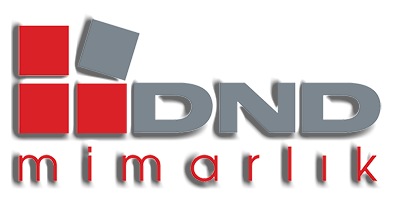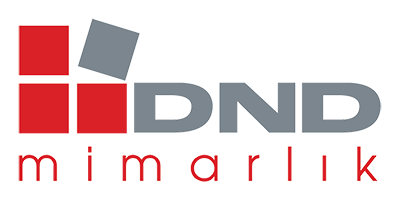Debt to Equity Ratio: a Key Financial Metric
Learn financial statement modeling, DCF, M&A, LBO, Comps and Excel shortcuts. For the remainder of the forecast, the short-term debt will grow by $2m each year, while the long-term debt will grow by $5m. Lenders and investors perceive borrowers funded primarily with equity (e.g. owners’ equity, outside equity raised, retained earnings) more favorably. Some of the other common leverage ratios are described in the table below. The ratio heavily depends on the nature of the company’s operations and the industry in which the company operates.
Debt-to-Equity Ratio Calculator – D/E Formula
For large public companies, the debt-to-equity ratio can be much higher than 2, but it is not acceptable for most small and medium-sized companies. For US companies, the average debt-to-equity ratio is about 1.5 (this is also typical for other countries). The interest paid on debt also is typically tax-deductible for the company, while equity capital is not. Enjoy a free month of expert bookkeeping and focus on growth, not numbers.
Debt to Equity (D/E) Ratio Calculator
If, as per the balance sheet, the total debt of a business is worth $50 million and the total equity is worth $120 million, then debt-to-equity is 0.42. This means that for every dollar in equity, the firm has 42 cents in leverage. A ratio of 1 would imply that creditors and investors are on equal footing in the company’s assets. Such a high debt to equity ratio shows that the majority of this company’s assets and business operations are financed using borrowed money. In case of a negative shift in business, this company would face a high risk of bankruptcy. The debt to equity ratio is a financial, liquidity ratio that compares a company’s total debt to total equity.
Get Your Question Answered by a Financial Professional
- Gearing ratios are financial ratios that indicate how a company is using its leverage.
- In some industries that are capital-intensive, such as oil and gas, a “normal” D/E ratio can be as high as 2.0, whereas other sectors would consider 0.7 as an extremely high leverage ratio.
- It shines a light on a company’s financial structure, revealing the balance between debt and equity.
- One limitation of the D/E ratio is that the number does not provide a definitive assessment of a company.
Additional factors to take into consideration include a company’s access to capital and why they may want to use debt versus equity for financing, such as for tax incentives. Put another way, if a company was liquidated and all of its debts were paid off, the remaining cash would be the total shareholders’ equity. For companies that aren’t growing or are in financial distress, the D/E ratio can be written into debt covenants when the company borrows money, limiting the amount of debt issued.
What is the Debt to Equity Ratio Formula?
It indicates how much debt a company is using to finance its operations compared to the amount of equity. Generally, the debt-to-equity ratio is calculated https://www.simple-accounting.org/ as total debt divided by shareholders’ equity. But, more specifically, the classification of debt may vary depending on the interpretation.
Debt to Equity Ratio Calculation Example
Investors can compare a company’s D/E ratio with the average for its industry and those of competitors to gain a sense of a company’s reliance on debt. In general, a high debt-to-equity ratio indicates that a company may not be able to generate enough cash to meet its debt obligations. However, a low debt-to-equity ratio can also indicate that a company is not taking advantage of the increased profits that financial leverage can bring.
Debt to Equity Ratio vs Financial Leverage
Because different industries have different capital needs and growth rates, a D/E ratio value that’s common in one industry might be a red flag in another. Gearing ratios focus more heavily on the concept of leverage than other ratios used in accounting or investment analysis. The underlying principle generally assumes that some leverage is good, but that too much places an organization at risk. Martin loves entrepreneurship and has helped dozens of entrepreneurs by validating the business idea, finding scalable customer acquisition channels, and building a data-driven organization.
The debt to equity ratio shows the percentage of company financing that comes from creditors and investors. A higher debt to equity ratio indicates that more creditor financing (bank loans) is used than investor financing (shareholders). The D/E ratio is a financial metric that measures the proportion of a company’s debt relative to its shareholder equity. The ratio offers insights into the company’s debt level, indicating whether it uses more debt or equity to run its operations.
In other words, it measures how much debt and equity a company uses to finance its operations. The D/E ratio is arguably one of the most vital metrics to evaluate a company’s financial leverage as it determines how much debt or equity a firm uses to finance its operations. When finding the D/E ratio of a company, it’s vital to compare the ratios of other companies within the same industry for a better idea of how they’re performing. The debt-to-equity ratio (D/E) measures the amount of liability or debt on a company’s balance sheet relative to the amount of shareholders’ equity on the balance sheet. D/E calculates the amount of leverage a company has, and the higher liabilities are relative to shareholders’ equity, the more leveraged the company is.
If the D/E ratio of a company is negative, it means the liabilities are greater than the assets. As an example, many nonfinancial corporate businesses have seen their D/E ratios rise in recent years because they’ve increased their debt considerably over the past decade. Over this period, their debt has increased from about $6.4 billion to $12.5 billion (2). It’s useful to compare ratios between companies in the same industry, and you should also have a sense of the median or average D/E ratio for the company’s industry as a whole. However, if that cash flow were to falter, Restoration Hardware may struggle to pay its debt. Investors can use the D/E ratio as a risk assessment tool since a higher D/E ratio means a company relies more on debt to keep going.
For shareholders, it means a decreased probability of bankruptcy in the event of an economic downturn. A company with a higher ratio than its industry average, therefore, may have difficulty securing additional funding from either source. A “good” Debt to Equity Ratio can vary widely by industry, but generally, a ratio of under 1.0 suggests that a company has more equity than debt, which is often viewed favorably. Ratios lower than double entry definition 0.5 are considered excellent, indicating the company relies more on equity to finance its operations, thus carrying less risk. However, some industries, like manufacturing or utilities, typically have higher ratios due to their reliance on heavy equipment and infrastructure which are capital-intensive. A decrease in the D/E ratio indicates that a company is becoming less leveraged and is using less debt to finance its operations.
The bank will see it as having less risk and therefore will issue the loan with a lower interest rate. This company can then take advantage of its low D/E ratio and get a better rate than if it had a high D/E ratio. If the D/E ratio gets too high, managers may issue more equity or buy back some of the outstanding debt to reduce the ratio.
The debt capital is given by the lender, who only receives the repayment of capital plus interest. Whereas, equity financing would entail the issuance of new shares to raise capital which dilutes the ownership stake of existing shareholders. You can find the inputs you need for this calculation on the company’s balance sheet. In our debt-to-equity ratio (D/E) modeling exercise, we’ll forecast a hypothetical company’s balance sheet for five years.
However, the appropriateness of the ratio varies depending on industry norms and the company’s specific circumstances. Let’s calculate the Debt-to-Equity Ratio of the leading sports brand in the world, NIKE Inc. The latest available annual financial statements are for the period ending May 31, 2022. He’s currently a VP at KCK Group, the private equity arm of a middle eastern family office. Osman has a generalist industry focus on lower middle market growth equity and buyout transactions.
Below is a short video tutorial that explains how leverage impacts a company and how to calculate the debt/equity ratio with an example. If the debt to equity ratio gets too high, the cost of borrowing will skyrocket, as will the cost of equity, and the company’s WACC will get extremely high, driving down its share price. In the example below, we see how using more debt (increasing the debt-equity ratio) increases the company’s return on equity (ROE). By using debt instead of equity, the equity account is smaller and therefore, return on equity is higher. In fact, debt can enable the company to grow and generate additional income. But if a company has grown increasingly reliant on debt or inordinately so for its industry, potential investors will want to investigate further.
Negative shareholders’ equity could mean the company is in financial distress, but other reasons could also exist. The total liabilities amount was obtained by subtracting the Total shareholders’ equity amount from the Total Liabilities and Shareholders’ Equity amount. The D/E ratio illustrates the proportion between debt and equity in a given company. In other words, the debt-to-equity ratio shows how much debt, relative to stockholders’ equity, is used to finance the company’s assets.

